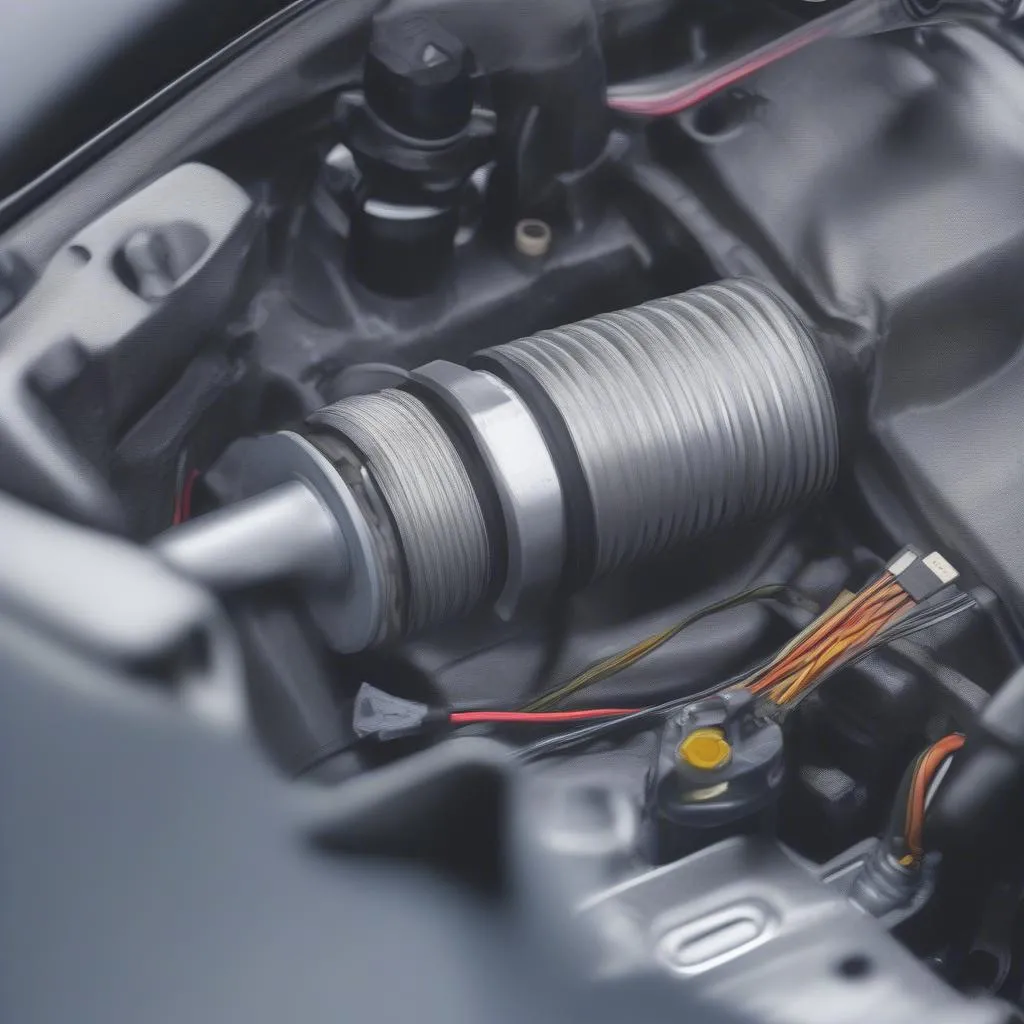“My check engine light came on, and now my 2006 BMW 750Li feels sluggish. The scanner reads D1E4 – what does it all mean?!”
Sound familiar? Experiencing car trouble can be stressful, especially when it comes with cryptic codes and a sense of impending doom (and repair costs!). Fear not, fellow BMW enthusiast, we’re here to break down the mystery of the D1E4 OBD code and guide you towards a solution.
What Does OBD Code D1E4 Mean?
The D1E4 code, specifically on a 2006 BMW 750Li, often points to an issue within the valvetronic system, particularly the eccentric shaft sensor. This sensor plays a crucial role in regulating your engine’s valve lift, directly impacting performance and fuel efficiency.
Imagine the eccentric shaft sensor as the conductor of an orchestra. Just as the conductor dictates the tempo and dynamics of the music, this sensor dictates the opening and closing of your engine valves, ensuring a harmonious performance. A faulty sensor can lead to a discordant symphony of engine troubles.
Why Should You Care About the D1E4 Code?
Ignoring this code is like ignoring a persistent cough – it might seem minor at first, but it could indicate something more serious brewing beneath the surface.
Here’s why addressing the D1E4 code is essential:
- Performance Issues: You might experience sluggish acceleration, rough idling, or reduced fuel economy.
- Engine Damage: A malfunctioning valvetronic system can eventually lead to more severe engine problems, leading to costly repairs.
- Safety Concerns: In extreme cases, ignoring the issue could lead to engine stalling or other safety hazards on the road.
Common Causes and Symptoms of the D1E4 Code
- Faulty Eccentric Shaft Sensor: This is the most common culprit.
- Wiring Issues: Damaged or corroded wiring to the sensor can disrupt signals.
- Valvetronic Motor Malfunction: A failing motor can affect the eccentric shaft’s movement.
Symptoms often include:
- Illuminated check engine light
- Reduced engine power and acceleration
- Rough idling
- Decreased fuel economy
Troubleshooting and Fixing the D1E4 Code
Before you panic and envision emptying your bank account at a dealership, there are a few steps you can take:
- Verify the Code: Use a reliable OBD-II scanner to confirm that the D1E4 code is the only one present.
- Visual Inspection: Check the wiring harness connected to the eccentric shaft sensor for any visible damage, loose connections, or corrosion.
- Consult a Professional: If the issue persists, it’s best to consult a qualified mechanic specializing in BMW vehicles. They have the expertise and tools to diagnose the problem accurately and recommend the appropriate repairs.
Here’s a visual representation of the eccentric shaft sensor and its location in a BMW engine:  BMW eccentric shaft sensor
BMW eccentric shaft sensor
Beyond the Technical: A Holistic Approach
While the D1E4 code might seem like a purely mechanical issue, some car enthusiasts believe that maintaining a car goes beyond just nuts and bolts.
Think of it this way: just as a clean and organized living space can promote a sense of calm and well-being, a well-maintained car, free from mechanical issues, can contribute to a smoother, less stressful driving experience.
Some even go as far as believing that a car in harmony with its owner will perform better and be less prone to issues. While this might seem like a stretch, there’s no denying the psychological impact of a well-running car on our overall driving experience.
Here’s an illustration of the concept of car care as a holistic approach:  Holistic Car Care
Holistic Car Care
Frequently Asked Questions about the D1E4 Code
Q: Can I continue driving my car with the D1E4 code?
A: While you might be able to drive for a short period, it’s not recommended. Ignoring the code can lead to further engine damage and potentially dangerous driving conditions.
Q: How much does it cost to fix the D1E4 code?
A: The cost can vary widely depending on the root cause and the chosen repair shop. It’s always advisable to get a quote from a reputable mechanic specializing in BMWs.
Q: Can I fix the D1E4 code myself?
A: While some DIY enthusiasts might be able to tackle this repair, it requires a good understanding of BMW engine systems and specialized tools.
Similar OBD Codes and Their Meanings
- P0011: “A” Camshaft Position – Timing Over-Advanced or System Performance (Bank 1)
- P0012: “A” Camshaft Position – Timing Over-Retarded (Bank 1)
- P0340: Camshaft Position Sensor “A” Circuit Malfunction
Explore More about BMW Diagnostics
- [Article Title about BMW Engine Codes]
- [Article Title about Valvetronic System Troubleshooting]
Need Help with Your BMW Diagnostics?
We understand that dealing with car issues can be overwhelming. If you’re struggling with the D1E4 code or any other automotive mysteries, our team of experts is just a message away.
Contact us on Whatsapp at +84767531508 for personalized assistance with your BMW diagnostic needs. We’re here to help you get back on the road with confidence.
Drive Smooth, Drive Confident
Remember, a well-maintained car is a happy car. By addressing the D1E4 code promptly and proactively caring for your 2006 BMW 750Li, you’ll ensure miles of enjoyable driving experiences for years to come.
Do you have any other questions about the D1E4 code or other BMW-related issues? Share your thoughts in the comments below!